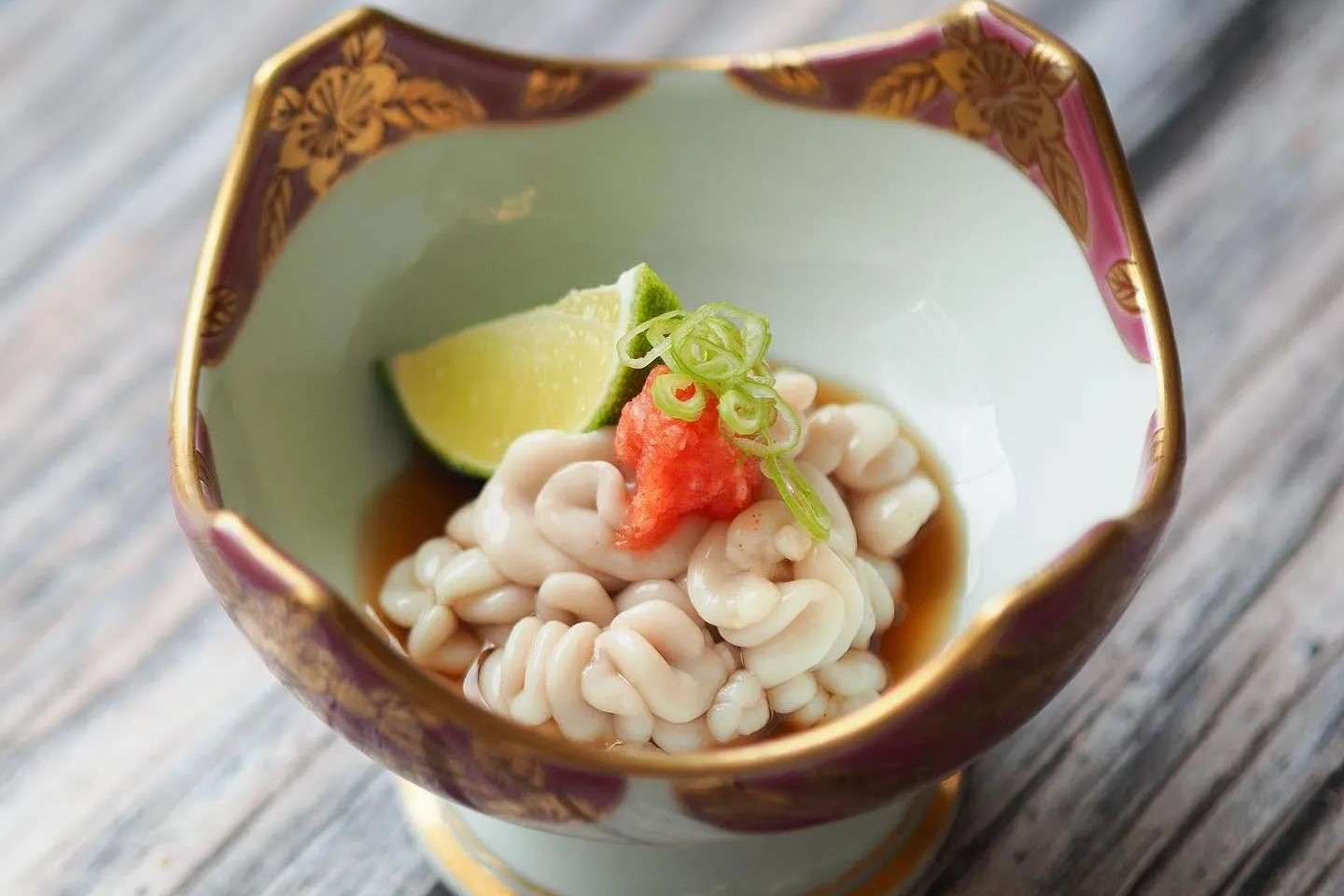
Shirako, also known as milt, is a Japanese delicacy that might surprise you. What exactly is shirako? Shirako refers to the sperm sacs of male fish, typically cod, but also pufferfish, anglerfish, and salmon. This unique dish is creamy, rich, and often served in high-end sushi restaurants. While it might sound unusual, shirako has a devoted following among food enthusiasts. It's enjoyed raw, steamed, or lightly grilled, often paired with ponzu sauce or served in hot pots. Shirako is not just about taste; it's also packed with nutrients like protein, omega-3 fatty acids, and vitamins. Curious about this intriguing food? Let's dive into 35 fascinating facts about shirako that will broaden your culinary horizons!
Key Takeaways:
- Shirako, also known as "white children," is a creamy and nutritious delicacy made from the sperm sacs of male fish. It has a rich history in Japanese cuisine and is enjoyed for its unique flavor and texture.
- Despite its niche status, shirako is gaining popularity globally, inspiring chefs to create new recipes and presentations. Its presence reflects a growing interest in diverse culinary traditions.
What is Shirako?
Shirako, often called "white children," is a Japanese delicacy that might surprise many. It's a unique dish with a rich history and distinct flavor profile. Let's dive into some fascinating facts about this intriguing food.
- Shirako is the milt, or sperm sacs, of male fish, typically cod, anglerfish, or pufferfish.
- The name "shirako" translates to "white children" in Japanese, referring to its appearance.
- Shirako is considered a winter delicacy in Japan, often enjoyed during the colder months.
- It's known for its creamy texture and delicate flavor, which some compare to custard or soft cheese.
- Shirako can be served in various ways, including raw, grilled, steamed, or deep-fried.
- In sushi restaurants, shirako is often served as nigiri or sashimi.
- The dish is rich in protein and omega-3 fatty acids, making it a nutritious option.
- Shirako is believed to have health benefits, including improving skin health and boosting energy levels.
- It's a popular ingredient in Japanese hot pot dishes, adding a unique flavor and texture.
- The taste of shirako can vary depending on the type of fish and preparation method used.
Historical Significance of Shirako
Shirako has a long history in Japanese cuisine, with its roots tracing back to ancient times. Its unique preparation and cultural significance make it a fascinating subject.
- Shirako has been consumed in Japan for centuries, with records dating back to the Edo period.
- It was traditionally enjoyed by the samurai class, who valued its rich flavor and nutritional benefits.
- The dish was often served during special occasions and celebrations, symbolizing prosperity and good fortune.
- Shirako was also believed to have aphrodisiac properties, adding to its allure.
- In the past, it was considered a luxury item, only accessible to the wealthy and elite.
- Today, shirako is more widely available, though it remains a delicacy often enjoyed in high-end restaurants.
- The preparation of shirako requires skill and precision, reflecting the artistry of Japanese cuisine.
- Traditional methods of preparing shirako have been passed down through generations, preserving its cultural heritage.
- The dish is often paired with sake, enhancing its flavor and providing a balanced dining experience.
- Shirako's historical significance continues to influence its popularity and status in modern Japanese cuisine.
Shirako Around the World
While shirako is primarily associated with Japan, its unique qualities have garnered attention globally. Let's explore how this delicacy is perceived and enjoyed in different parts of the world.
- In Korea, shirako is known as "eunhae" and is enjoyed in various dishes, including soups and stews.
- In Russia, milt from different fish species is consumed, often smoked or pickled.
- Some European countries, such as Italy and Spain, also have traditional dishes featuring fish milt.
- In the United States, shirako is gaining popularity in high-end Japanese restaurants and sushi bars.
- The dish is often seen as an adventurous choice for food enthusiasts and culinary explorers.
- Shirako's unique texture and flavor have inspired chefs worldwide to experiment with new recipes and presentations.
- Despite its growing popularity, shirako remains a niche item, often reserved for those with a taste for exotic foods.
- Cultural perceptions of shirako vary, with some viewing it as a delicacy and others finding it unusual or unappetizing.
- The global interest in shirako reflects a broader trend of exploring and appreciating diverse culinary traditions.
- As international cuisine continues to evolve, shirako's presence on the global stage is likely to expand.
Fun Facts About Shirako
Shirako is full of surprises, from its unique characteristics to its cultural significance. Here are some fun and lesser-known facts about this intriguing dish.
- Shirako is sometimes referred to as "fish semen" in English, highlighting its unusual nature.
- The texture of shirako can be described as silky, creamy, and slightly gelatinous.
- Some people compare the taste of shirako to that of sweetbreads or foie gras.
- Shirako is often used in Japanese fusion cuisine, blending traditional and modern culinary techniques.
- The dish has inspired various culinary competitions and events, celebrating its unique qualities and versatility.
Final Thoughts on Shirako
Shirako, often called "white children," is a unique delicacy in Japanese cuisine. It's the milt or sperm sacs of male fish, usually cod, and has a creamy texture with a mild, slightly sweet flavor. While it might sound unusual to some, it's a prized dish in Japan, enjoyed for its rich taste and nutritional benefits. Shirako is typically served in various ways, including raw, steamed, or fried, and is often paired with ponzu sauce or other condiments to enhance its flavor.
For those adventurous enough to try it, Shirako offers a glimpse into the diverse and fascinating world of Japanese culinary traditions. Whether you're a seasoned foodie or just curious about new flavors, giving Shirako a try could be a memorable experience. So next time you're in Japan or at a Japanese restaurant, consider stepping out of your comfort zone and sampling this intriguing dish.
Frequently Asked Questions
Was this page helpful?
Our commitment to delivering trustworthy and engaging content is at the heart of what we do. Each fact on our site is contributed by real users like you, bringing a wealth of diverse insights and information. To ensure the highest standards of accuracy and reliability, our dedicated editors meticulously review each submission. This process guarantees that the facts we share are not only fascinating but also credible. Trust in our commitment to quality and authenticity as you explore and learn with us.


